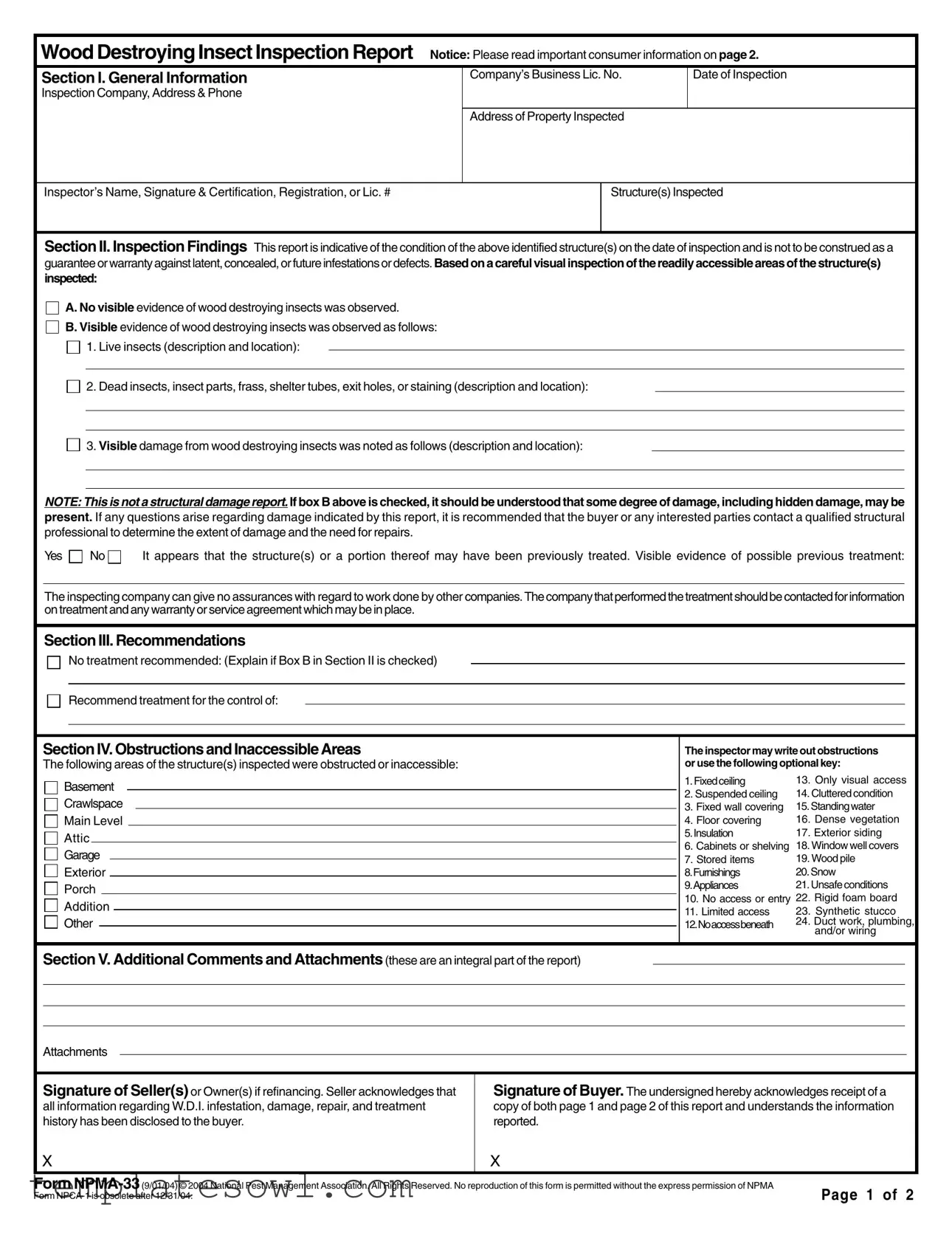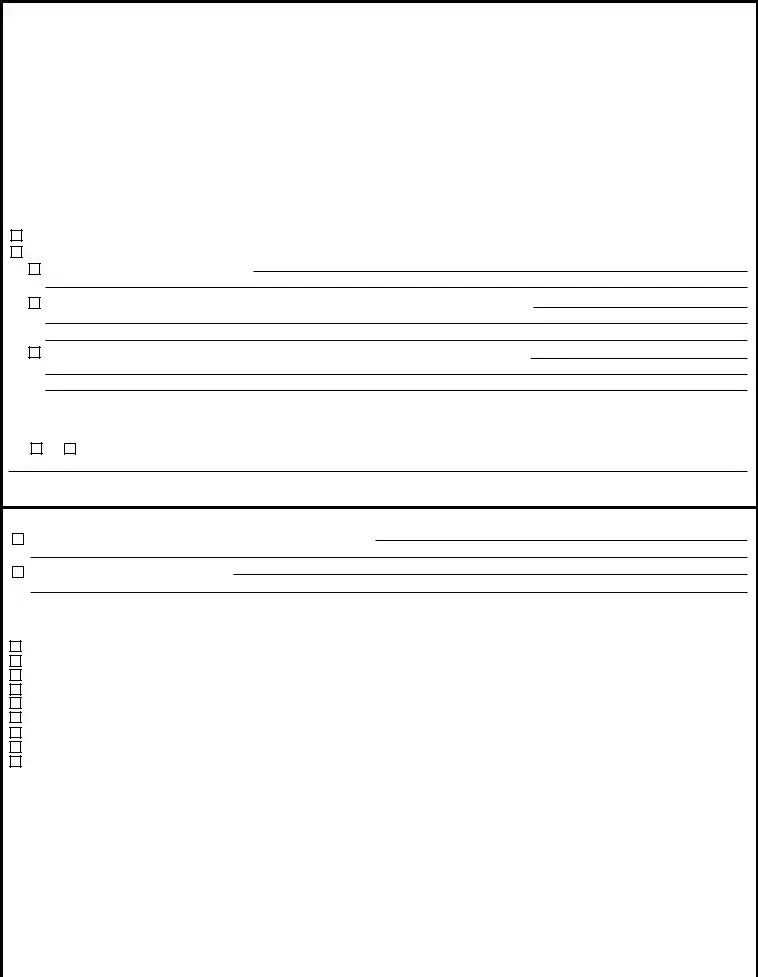What is the purpose of the Wood Report Insects form?
The Wood Report Insects form is designed to provide an assessment of a property's exposure to wood-destroying insects. It serves as a visual inspection report that details the findings regarding any visible evidence of infestations in the structure at the time of inspection. It is not a guarantee against future infestations or hidden defects.
What kind of insects does the inspection report cover?
The inspection primarily focuses on wood-destroying insects, including termites, carpenter ants, carpenter bees, and reinfesting wood boring beetles. Other issues such as mold or mildew are not included in this inspection.
What happens if visible evidence of insects is found?
If the inspection identifies visible evidence of wood-destroying insects, the inspector will provide details about the live insects and any related damage. It is important to note that damage noted in the report may include hidden damage, and the property owner is encouraged to consult a qualified professional for a comprehensive evaluation and necessary repairs.
Are there limitations to the inspection process?
Yes, there are several limitations. The inspection is visual and only includes accessible areas of the property. The inspection does not cover areas that are blocked or difficult to access. Additionally, any damage or infestation that is hidden or in inaccessible parts of the structure might not be identified.
Can a buyer rely on this report when purchasing a property?
While the report provides valuable insights into the condition of the property with respect to wood-destroying insects, it is not a warranty against future issues. If the form is not utilized within 90 days, it may be considered invalid for mortgage or settlement purposes.
What should homeowners do to prevent wood-destroying insect infestation?
Homeowners are advised to maintain their properties by eliminating conditions that may promote insect infestations. This includes ensuring proper drainage, maintaining ventilation, storing firewood away from the structure, and keeping wood debris from accumulating. Implementing these preventive measures can help reduce the risk of infestation.
What if the inspector cannot access certain areas of the property?
If the inspector identifies areas that are inaccessible, these will be noted on the report. The inspection company may be contacted for follow-up inspections once access to these areas is possible. An additional fee may apply for this service.
What should sellers and buyers be aware of regarding past treatments?
The inspection form may indicate whether there has been any previous treatment for wood-destroying insects. However, the inspecting company cannot provide assurances regarding past treatments performed by other companies. For information on treatment history or warranties, the seller should contact the company that provided previous treatment.
What should I do with the inspection report after receiving it?
After receiving the inspection report, all parties involved—sellers, buyers, or their representatives—should carefully review the findings and understand the implications. It's essential to retain a copy for future reference and, if necessary, consult with a qualified professional to address any concerns raised in the report.

